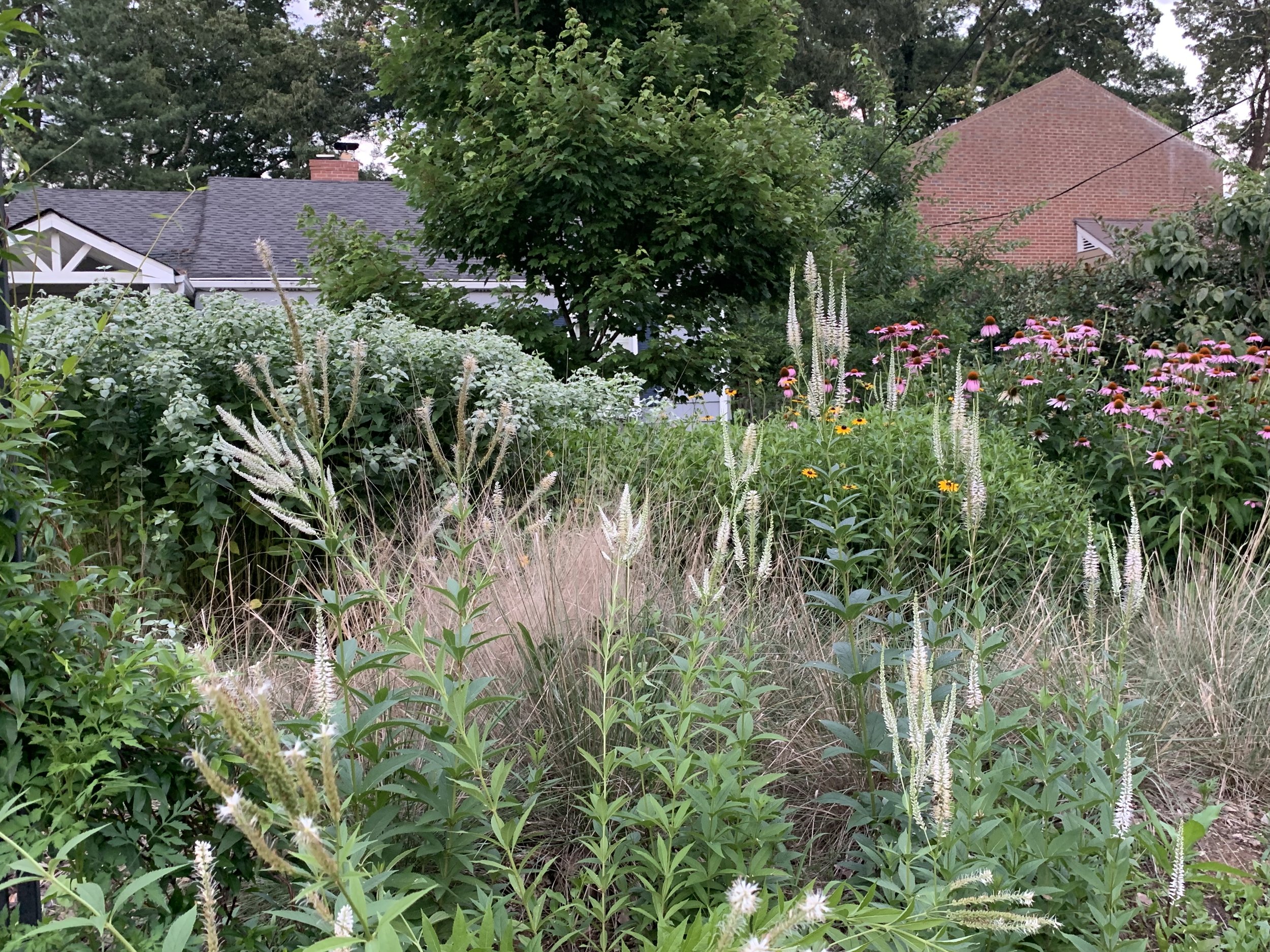Maintaining Your Meadowscape
A meadow without much maintenance in Summer…… too wild or love it wild? Up to you!
Meadows are dynamic and ever changing. There is no exact how-to, but we’ll get you started on DIY maintenance here.
The great news is that meadowscapes are fairly low maintenance landscape solutions! They provide TONS of ecological services for a fraction of the effort. The best thing to do is get to know your meadow by observing your plants through the year. And here's an overvierw to get you started, by season, caring for your meadow:
SUMMER
Early summer is when those biennials and perennials, that you thought might be dead, like echinacea, finally spring to life! June or July in Georgia is when we can cut back any spindlier (leggy) perennials if we want to encourage a bushier habitat. It can be hard to cut a plant when it’s blooming, but taking them down to 2ft or so (depending on the plant!) will encourage fuller, lower plant habit and more blooming through the rest of the season. Just put the cut flowers in a bowl or vase inside!
FALL
Enjoy the wild colors of your fall meadow! Harvest leaves before frost and roots for medicine or food after first frost. Refrain from cutting back most of the spent blooms at this time, as the seed pods provide food for birds throughout the winter and grasses are habitat for pollinators. Also, the blackened spent seedpods look gorgeous against the golden dormant grass stalks- a real sign of the season. AND plants like milkweed will reseed themselves.
WINTER
Your meadow is sleeping, except for those slow-growing cool season grasses that tend to grow on through the GA Winters. Please continue to refrain cutting back those spent perennials and grasses! They may be harboring overwintering pollinators and feeding native birds during a lean time.
SPRING
With the first signs of Spring, you will start to see some plants emerging! The stoloniferous Monardas are leafing out. It is finally time to cut back that vegetation from last year! Spent stalks can lie on the ground as mulch for the newly arising plants. If it’s a particularly wet spring and more air flow is desired, the stalks can be composted. Most grass stalks can be cut back to 12ins or so. Perennials to 6-8ins or so. Never cut back Pink Muhly grass. It tends not to survive this. If needed, last year’s gross can be pulled out by hand.

